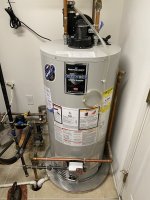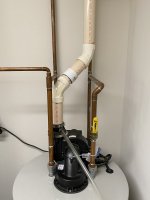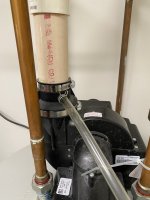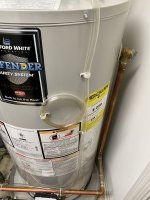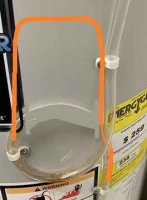fiveolddogs
New Member
A relative had a water heater installed a few years ago. As part of the install, a condensate line was formed into a loop, attached to the tank, and then terminated at a floor drain.
I was astonished to learn this week that the installer had instructed the homeowner to keep the condensate filled with water. She is not strong enough to squeeze the hose clamp to remove the hose and has been paying someone to come by and manually detach the hose, fill it with water, and put it back in place every few weeks.
Clearly the loop of hose is meant to act as a trap, but since it is not plumbed into the sewer line, is there any reason to do this?
I was astonished to learn this week that the installer had instructed the homeowner to keep the condensate filled with water. She is not strong enough to squeeze the hose clamp to remove the hose and has been paying someone to come by and manually detach the hose, fill it with water, and put it back in place every few weeks.
Clearly the loop of hose is meant to act as a trap, but since it is not plumbed into the sewer line, is there any reason to do this?

